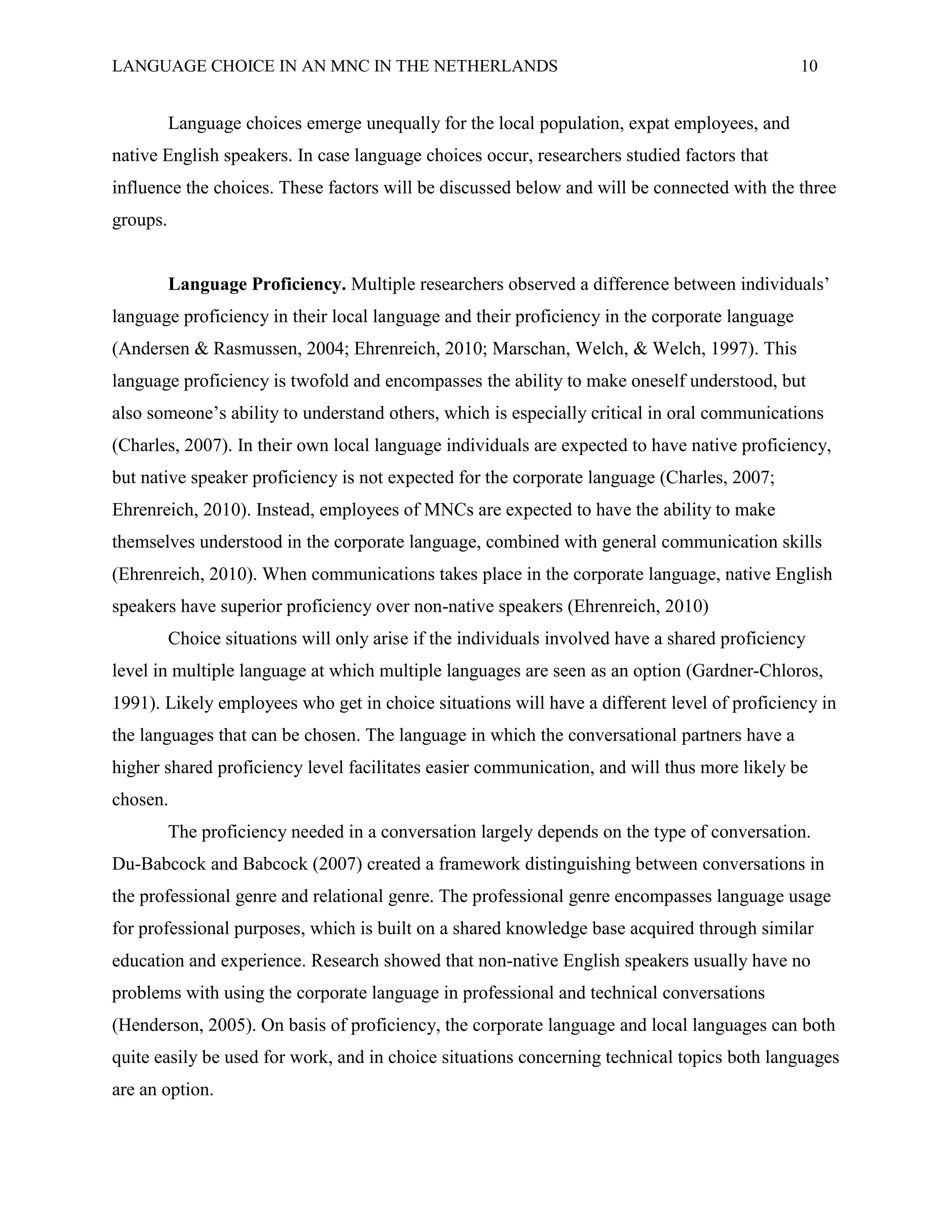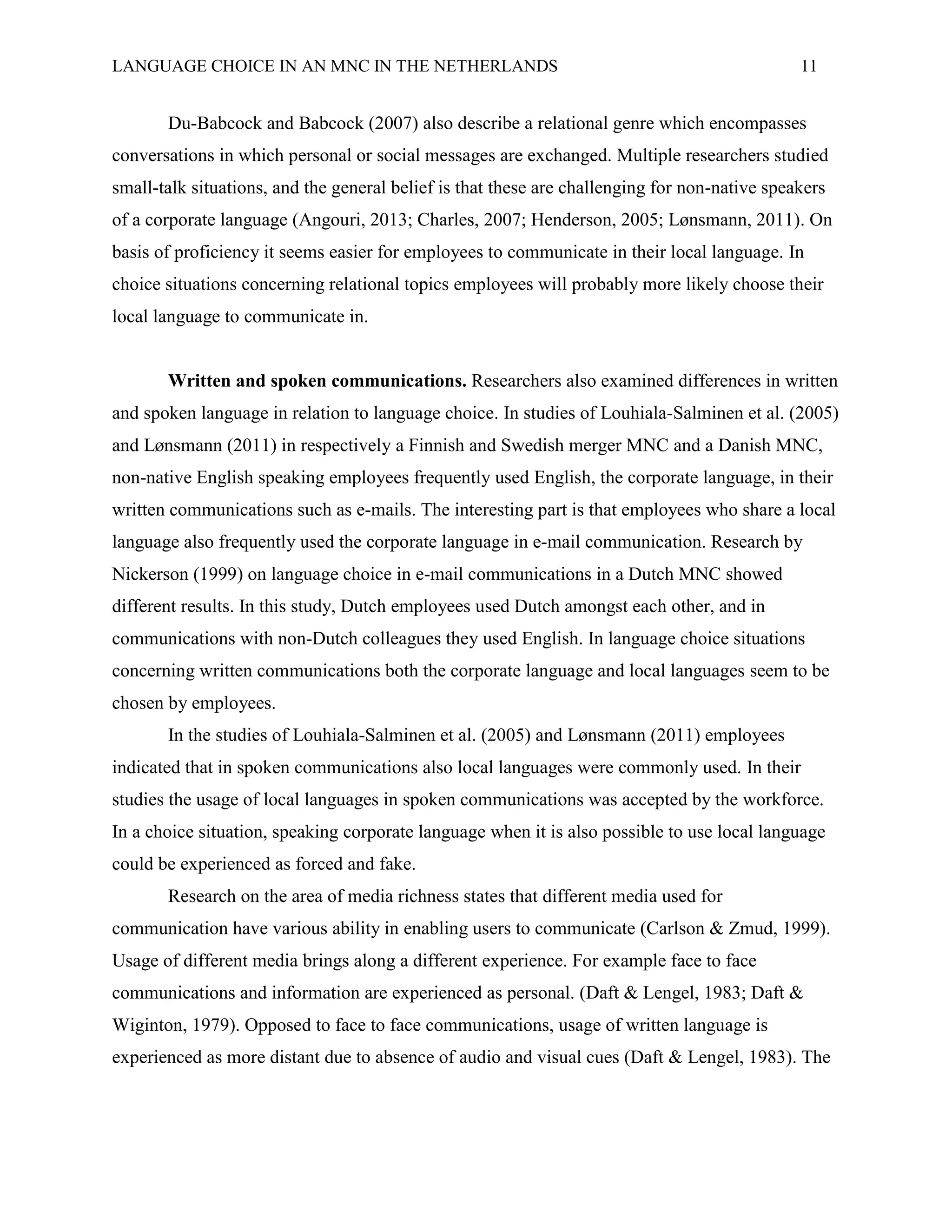This document provides a literature review and background on language choice in multinational corporations. It discusses how MNCs often introduce a common corporate language, usually English, to facilitate communication among a multilingual workforce. The review examines previous research on language usage at MNC headquarters that found employees have situations where they can choose between the corporate language or local languages. The research question explores employees' perceptions and reasons for choosing corporate versus local languages. Interviews with employees at the Dutch headquarters of Mobover, a linguistically diverse MNC, will provide data for the study.





















































